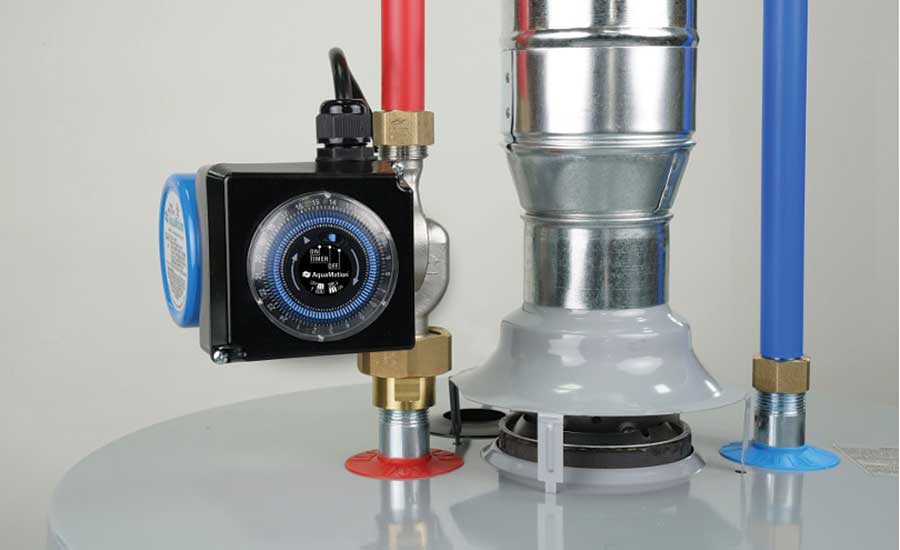In today’s world, where energy conservation and efficiency are increasingly important, finding ways to optimize the energy usage of our appliances is crucial.
One such appliance that can help in maximizing energy efficiency is a circulation pump. Circulation pumps are commonly used in heating, ventilation, and air conditioning (HVAC) systems, as well as in hot water recirculation systems.
They work by circulating water or air through a closed loop, ensuring a consistent flow and temperature throughout the system.
Understanding Circulation Pumps
Circulation pumps play a vital role in maintaining the desired temperature in a system by continuously moving the fluid or air. This constant circulation helps in preventing heat loss and ensures that the system operates efficiently.
By installing a circulation pump, you can reduce the energy consumption of your HVAC system and improve its overall performance. Circulation pumps play a vital role in maintaining the desired temperature in a system by continuously moving the fluid or air.
This constant circulation helps in preventing heat loss and ensures that the system operates efficiently. By installing a circulation pump, you can reduce the energy consumption of your HVAC system and improve its overall performance.
The Benefits of Using a Circulation Pump
There are several benefits to using a circulation pump in your HVAC or hot water system. One of the main advantages is that it helps in reducing the wait time for hot water to reach the faucet, which can result in significant water savings over time.
Using a circulation pump improves energy efficiency by ensuring consistent fluid distribution and maintaining optimal temperature control in heating and cooling systems. It enhances system performance, reduces energy costs, and minimizes wear and tear on equipment. Additionally, it provides immediate hot water in domestic applications, reducing water wastage and waiting times.
This can improve the overall quality of the water and help maintain a healthier environment. Furthermore, circulation pumps can also extend the lifespan of your system by reducing the workload on the equipment, leading to fewer breakdowns and repairs. Overall, installing a circulation pump can improve efficiency, save energy, and enhance the performance of your HVAC or hot water system.
Maximizing Energy Efficiency
To maximize the energy efficiency of a circulation pump, there are several factors to consider. Firstly, it is important to choose a pump that is appropriately sized for your system. An oversized pump can lead to unnecessary energy consumption, while an undersized pump may not be able to meet the system’s demands.
Consulting with a professional can help in determining the right size for your circulation pump. Additionally, the design and layout of the piping system can greatly impact the energy efficiency of the circulation pump.
Ensuring that the piping is properly sized, insulated, and free of any obstructions can help reduce the workload on the pump, leading to lower energy consumption. Furthermore, using variable speed drives or controllers can also contribute to maximizing energy efficiency. These devices allow the pump to adjust its speed based on the system’s demand, reducing energy consumption during times of lower demand.
Regular maintenance of the circulation pump is also essential for optimal energy efficiency. Keeping the pump clean, well-lubricated, and properly aligned can help prevent energy loss due to inefficiencies or malfunctions.
Optimizing Pump Operations
Another way to maximize energy efficiency is by optimizing the operations of the circulation pump. This can be achieved by programming the pump to run only when needed, such as during peak usage hours.
Additionally, regular maintenance of the pump, including cleaning and lubrication, can help in ensuring that it operates at peak efficiency. Regular maintenance of the pump, including cleaning and lubrication, can help in ensuring that it operates at peak efficiency.
Another way to maximize energy efficiency is by optimizing the operations of the circulation pump. This can be achieved by programming the pump to run only when needed, such as during peak usage hours.
Utilizing Smart Controls
Smart controls can further enhance the energy efficiency of circulation pumps by allowing you to monitor and adjust their operations remotely. These controls enable you to customize the pump’s settings based on your usage patterns, ensuring that it runs only when necessary.
By utilizing smart controls, you can optimize the energy usage of your circulation pump and reduce your overall energy costs. Smart controls can further enhance the energy efficiency of circulation pumps by allowing you to monitor and adjust their operations remotely.
These controls enable you to customize the pump’s settings based on your usage patterns, ensuring that it runs only when necessary. By utilizing smart controls, you can optimize the energy usage of your circulation pump and reduce your overall energy costs.
Conclusion
In conclusion, maximizing energy efficiency with a circulation pump is not only beneficial for the environment but also for your wallet. By understanding how circulation pumps work, investing in energy-efficient models, and optimizing their operations, you can significantly reduce your energy consumption and costs. With the right approach and maintenance, a circulation pump can be a valuable asset in achieving a more sustainable and energy-efficient home or building.
Stay in touch to get more updates & news on Web of Buzz !




